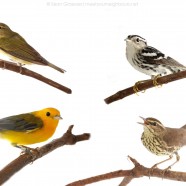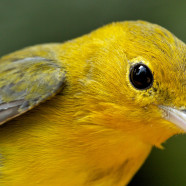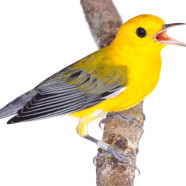The Four MoSI Warblers
The 2014-15 MoSI, or Monitoreo de Sobrevivencia Invernal (Monitoring of Winter Survivorship), protocol banding season for the Nicoya Peninsula Avian Research Station is now in the books. Here we have four species, in the form of Neotropical migratory warblers, that were banded and recaptured over the years at the station: the Tennessee Warbler (Oreothlypis peregrina), Black-and-white Warbler (Mniotilta varia), Prothonotary Warbler (Protonotaria citrea), and Northern Waterthrush (Parkesia noveboracen). Banding research is critical to gain an understanding of where and why they return to...
Read MoreProthonotary Warbler (Protonotaria citrea) recapture by Sean Graesser
This Prothonotary Warbler was originally banded in 2011 as a bird of at least two years of age. We recaptured this bird this year at our site. This mean the bird has traveled at least 27,000 miles so far in his life. It has returned to the same site in a Mangrove estuary in Costa Rica now for three years. It always amazes me to think about the incredible journeys these songbirds make and the need to preserve the habitat on both ends of their life cycles.
Read MoreProthonotary Warbler (Protonotaria citrea) by Twan Leenders
This stunning Prothonotary Warbler (Protonotaria citrea) and its vivid yellow color stand out magnificently against the white Meet Your Neighbours style background. Twan took this photo while in Costa Rica last week after it was netted and banded by Sean. It is high on my list as one of the best I’ve ever seen. Coming from Connecticut the Prothonotary is a rare treat and seeing one like this…whoa. If you can find a banded male this spring and summer in your local wetlands, stream, swamp, bottomland forest or associated habitats it may just be this bird!
Read More






